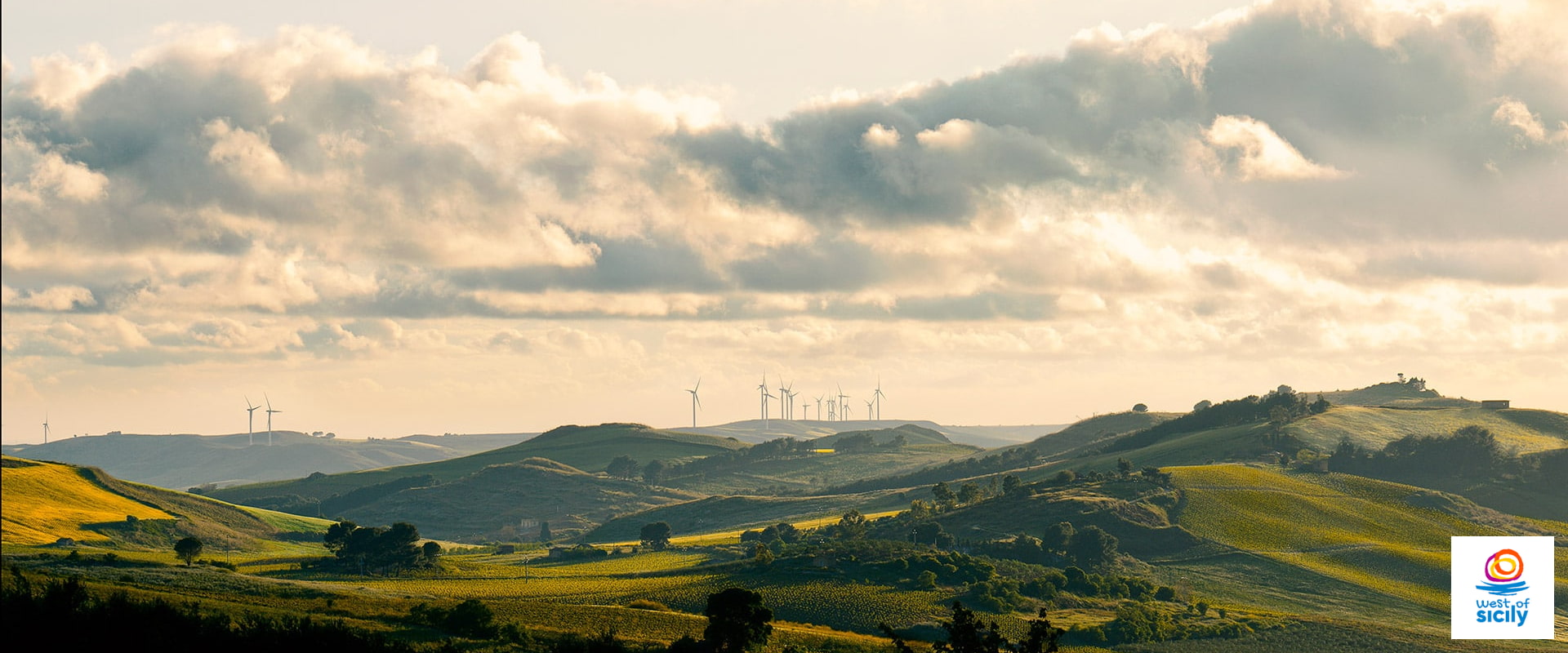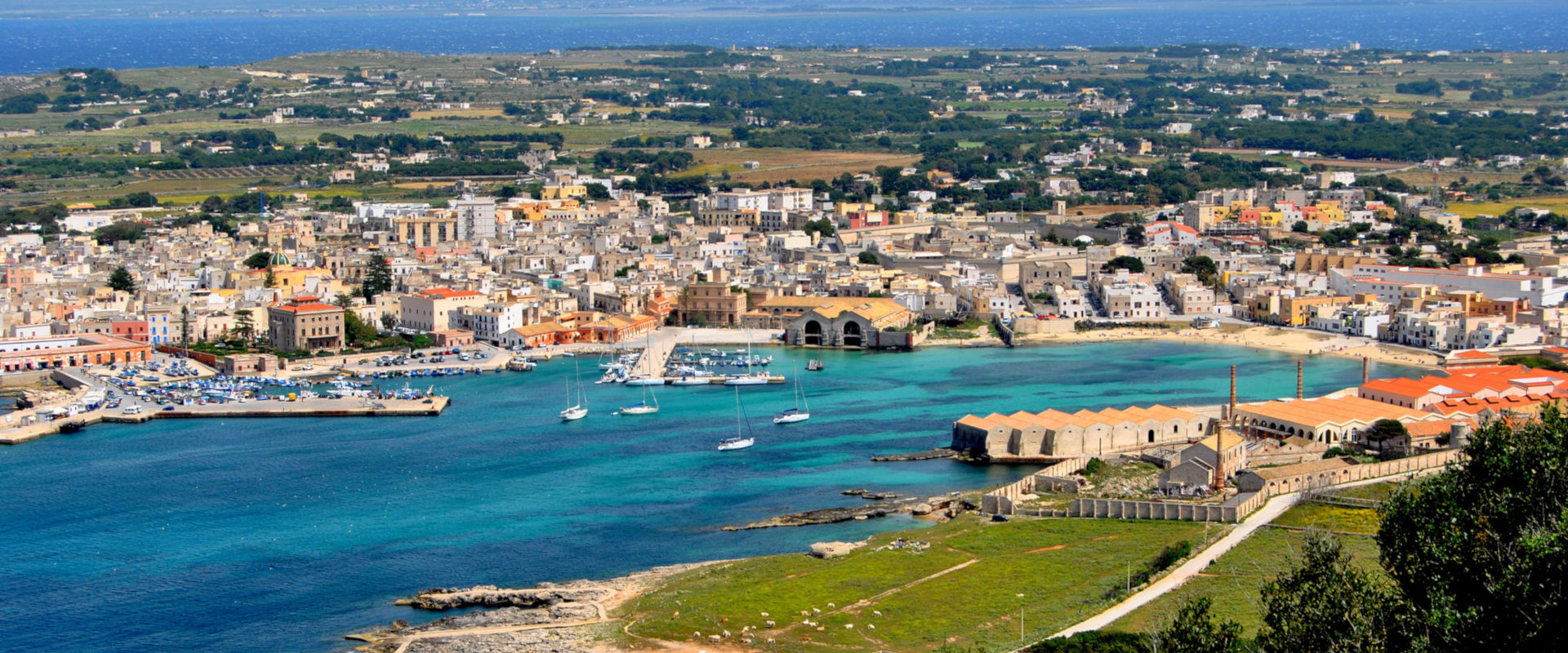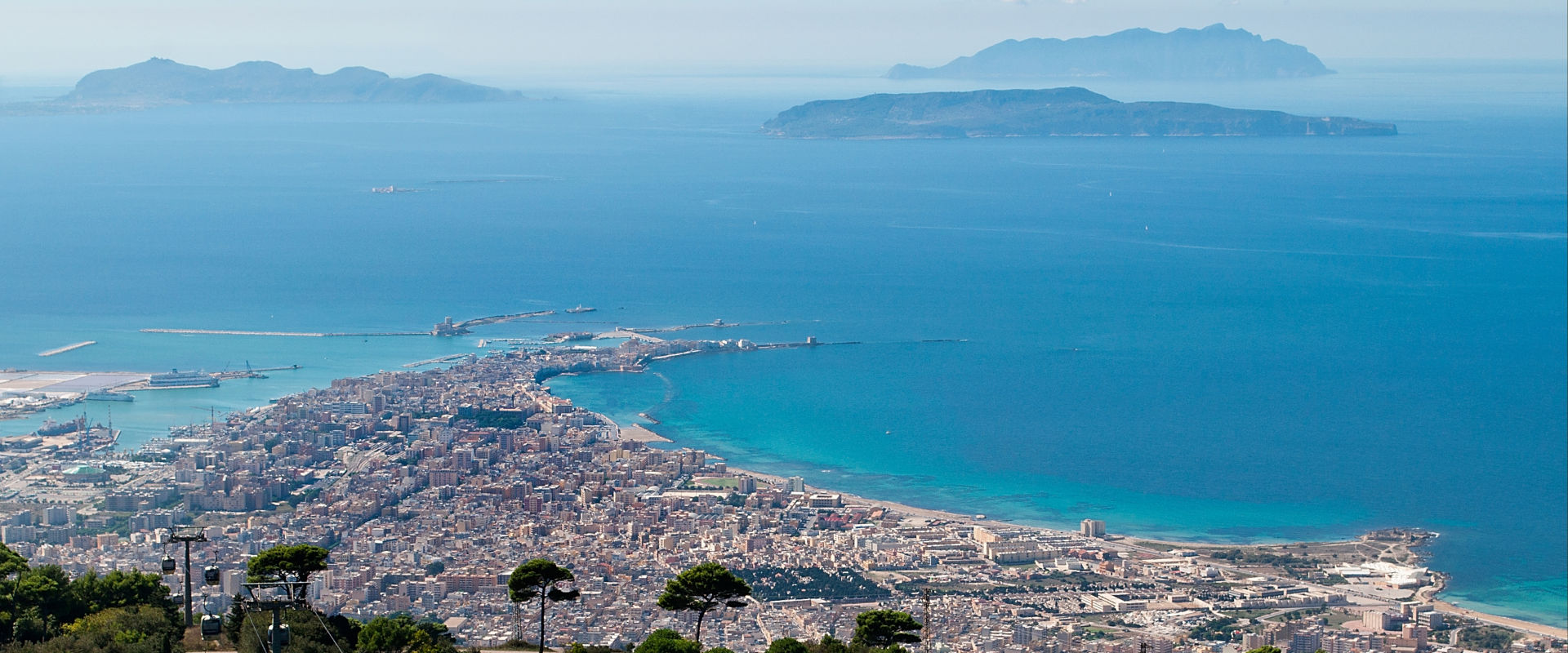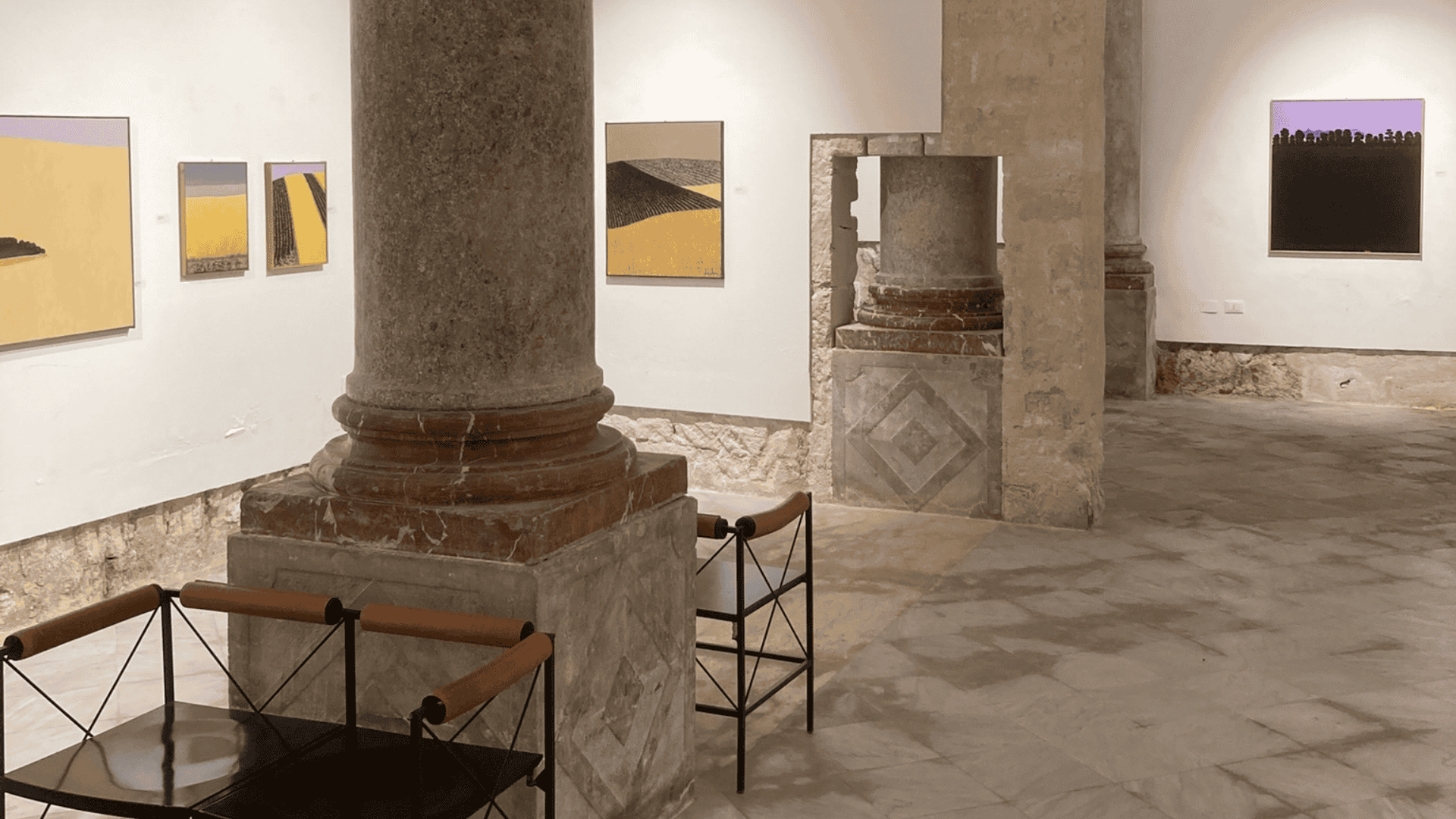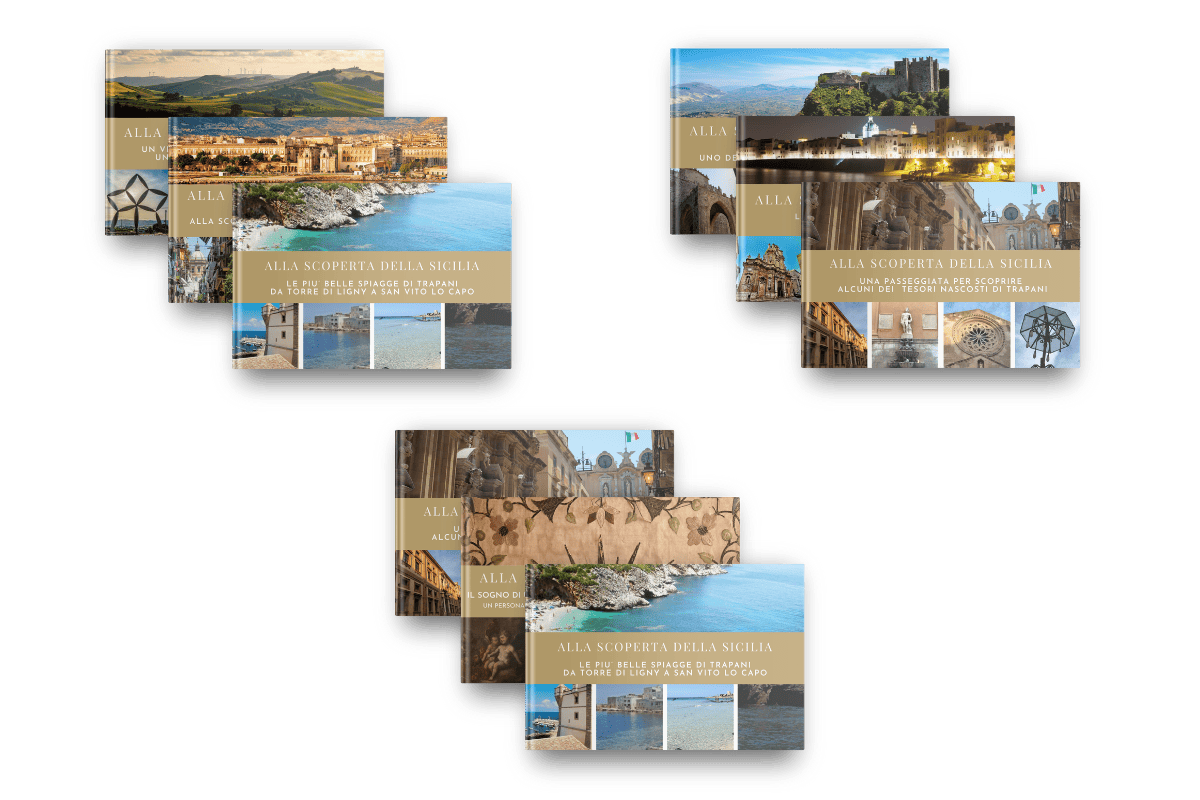The marina and the castle as protagonists
of Castellammare del Golfo
Castellammare del Golfo is a small municipality in the province of Trapani that encompasses many natural beauties, enriched by a historical centre of high cultural, architectural and artistic value.
The symbol of the town is the Arab-Norman castle, from which the town derives its name, which stands on the tip of the coast, as if to guard and protect its people from threats from the sea. Castellammare del Golfo today is a town that thrives on tourism, fishing and viticulture and that you can visit on foot or enjoy a pleasant bike ride. The Playa, the largest beach, the Faraglioni of Scopello, the Zingaro Nature Reserve, Monte Inici and the Segestane Thermal Baths are among the main attractions not to be missed during a trip of relaxation and discovery.
The Arab-Norman Castle and other monuments
Castellammare del Golfo is a town strongly linked to the sea, dominated by the Arab-Norman Castle, built by the Arabs and extended by the Normans as a defence fortress and watchtower around the 10th century. Throughout history, the castle was also occupied by the Swabians, who added two towers, and by the Angevins and Aragonese, who first destroyed and then rebuilt with the addition of more walls.
The castle rises near the port of Castellammare del Golfo and today houses a museum centre inside it consisting of an itinerary called ‘The Memory of the Mediterranean’: an interesting itinerary aimed at recounting the vicissitudes of a multicultural land. The route is divided into four sections: the Water and Mill Museum, the Museum of Production Activities, the Archaeological Museum and the Maritime Activities Museum. A unique place to enjoy a panoramic view of the Gulf’s beaches and coastline.
Another architectural symbol of the city is the Mother Church, which houses the majolica statue of Our Lady of Succour, the city’s patron saint. In the streets of the old town, it will be easy to find stalls full of local handicrafts such as colourful and finely painted ceramics, a tradition linked to Arab rule. Pottery is an experience to be experienced first-hand thanks to Giardini Mon Plaisir, which offers its guests the chance to become potters for a day, thanks to the decoration courses offered at the villa.
Typical constructions of the Castellammare area are the bagli from the Arab era: fortified farms characterised by large courtyards. They were once structures that housed both landowners and farmers, in a rural setting that today attracts many fascinated tourists curious to experience an alternative stay that is rich in history, but also comfortable. The landscape of Castellammare del Golfo also features ancient Saracen watchtowers, including the Bennistra Tower and the Scopello Tuna Tower.
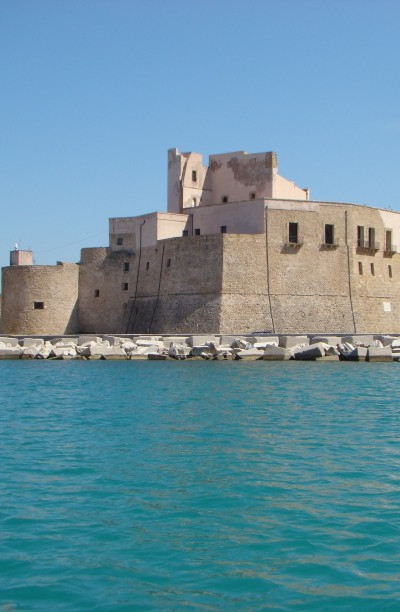

The Arab-Norman Castle and other monuments
Castellammare del Golfo is a town strongly linked to the sea, dominated by the Arab-Norman Castle, built by the Arabs and extended by the Normans as a defence fortress and watchtower around the 10th century. Throughout history, the castle was also occupied by the Swabians, who added two towers, and by the Angevins and Aragonese, who first destroyed and then rebuilt with the addition of more walls.
The castle rises near the port of Castellammare del Golfo and today houses a museum centre inside it consisting of an itinerary called ‘The Memory of the Mediterranean’: an interesting itinerary aimed at recounting the vicissitudes of a multicultural land. The route is divided into four sections: the Water and Mill Museum, the Museum of Production Activities, the Archaeological Museum and the Maritime Activities Museum. A unique place to enjoy a panoramic view of the Gulf’s beaches and coastline.
Another architectural symbol of the city is the Mother Church, which houses the majolica statue of Our Lady of Succour, the city’s patron saint. In the streets of the old town, it will be easy to find stalls full of local handicrafts such as colourful and finely painted ceramics, a tradition linked to Arab rule. Pottery is an experience to be experienced first-hand thanks to Giardini Mon Plaisir, which offers its guests the chance to become potters for a day, thanks to the decoration courses offered at the villa.
Typical constructions of the Castellammare area are the bagli from the Arab era: fortified farms characterised by large courtyards. They were once structures that housed both landowners and farmers, in a rural setting that today attracts many fascinated tourists curious to experience an alternative stay that is rich in history, but also comfortable. The landscape of Castellammare del Golfo also features ancient Saracen watchtowers, including the Bennistra Tower and the Scopello Tuna Tower.
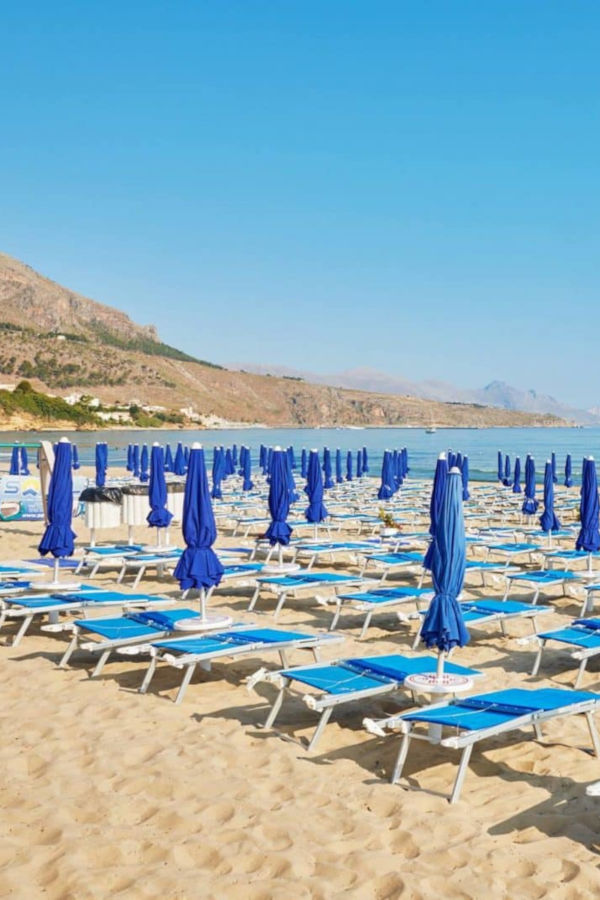
The beaches of Castellammare del Golfo
Castellammare del Golfo offers a landscape rich in coastlines and beaches characterised by crystal-clear stretches of water. An alternation of sandy beaches and rocky coves identifies the entire gulf, giving it a variety appreciated by tourists and residents alike.
The largest beach in Castellammare del Golfo is the Playa, located a few kilometres east of the historic centre. La Playa is a cove with fine sand ideal for both families and young people, easily accessible on foot or by bicycle.
Other inlets of undisputed beauty include Cala Petrolo, Vallone San Giuseppe and Costa dei Gigli. Also worth mentioning are Punta del Grottaro, Cala Rossa and Punta Gran Marinaro.
The advice is to add to your trip to Castellammare del Golfo a visit to the small inlet called Vucciria, characterised by small caves, and then the Fossa dello Stinco. Also not to be missed is the Grotta di Santa Margherita, which is identified by the presence of frescoed walls with sacred depictions dating from the 11th to 15th centuries.
The Faraglioni of Scopello and the Zingaro Nature Reserve
Another exclusive stop offered by the municipality of Castellammare del Golfo is Scopello, with its faraglioni (stacks) set in the blue sea and its tuna fishery, one of the oldest in Sicily. A place filled with ancient artefacts for which an archaeological itinerary called the ‘Sunken Museum’ has been designed. An exclusive stretch of water that offers the clarity typical of rocky seabeds and rugged coastlines. Nature dominates these unspoilt places with a historical flavour.
An example of a perfect connection between land and sea is offered by the Zingaro Nature Reserve, which stretches for about seven kilometres of coastline from Castellammare del Golfo to San Vito lo Capo. Its flora, consisting of rare plants, is as exclusive as its fauna. The variety of animal species present within the Zingaro Reserve is not found anywhere else in Sicily. A route to be enjoyed calmly, enjoying the peace of a walk among the trees, while between one path and the next you can see the enchanting coves from Scopello to San Vito Lo Capo.
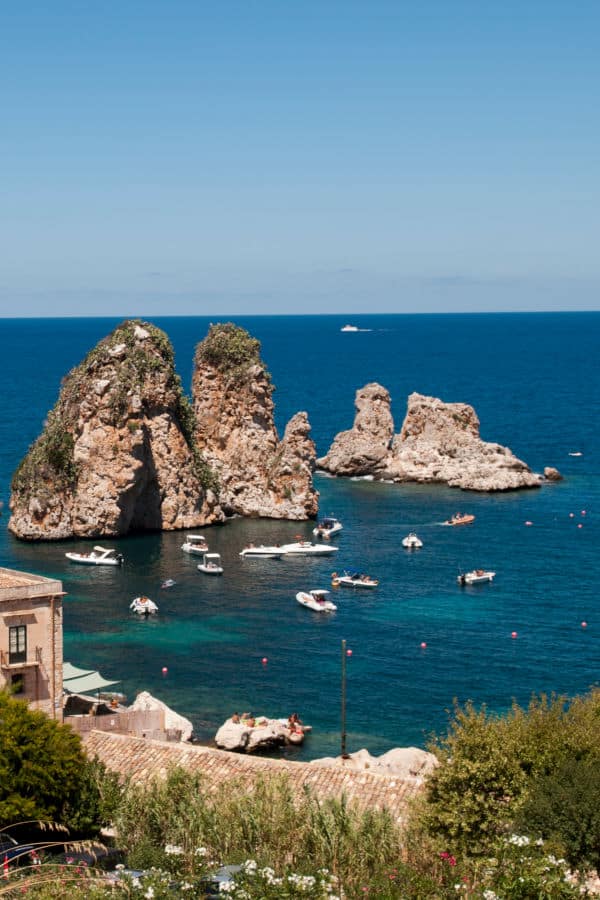

The Faraglioni of Scopello and the Zingaro Nature Reserve
Another exclusive stop offered by the municipality of Castellammare del Golfo is Scopello, with its faraglioni (stacks) set in the blue sea and its tuna fishery, one of the oldest in Sicily. A place filled with ancient artefacts for which an archaeological itinerary called the ‘Sunken Museum’ has been designed. An exclusive stretch of water that offers the clarity typical of rocky seabeds and rugged coastlines. Nature dominates these unspoilt places with a historical flavour.
An example of a perfect connection between land and sea is offered by the Zingaro Nature Reserve, which stretches for about seven kilometres of coastline from Castellammare del Golfo to San Vito lo Capo. Its flora, consisting of rare plants, is as exclusive as its fauna. The variety of animal species present within the Zingaro Reserve is not found anywhere else in Sicily. A route to be enjoyed calmly, enjoying the peace of a walk among the trees, while between one path and the next you can see the enchanting coves from Scopello to San Vito Lo Capo.
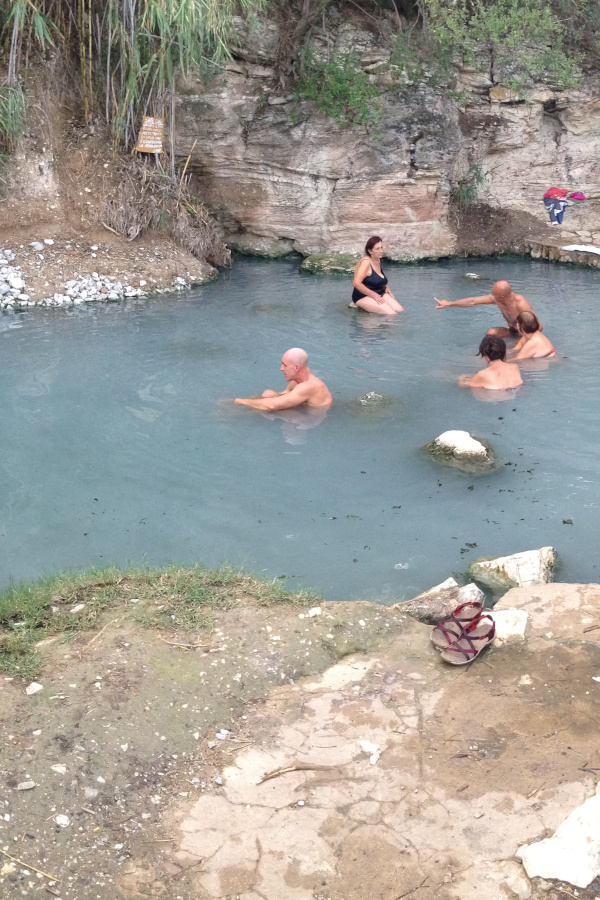
The Segestan Baths
A few kilometres from Castellammare del Golfo, in contrada Ponte Bagni, is the establishment of the Segestane Baths. The thermal complex offers various treatments such as mud baths, massages, whirlpools. Here, nature is a source of wellbeing: the mineral waters flow at a temperature of 47 degrees Celsius. The warmth and properties of these waters are ideal for baths and inhalations, also for therapeutic purposes due to their anti-inflammatory properties and useful for treating rheumatic, skin and respiratory problems.
The Segestane baths were built between 1960 and 1990, and their genesis is divided between mythology and legend. Diodorus Siculus, in his works, tells how the nymphs had created these springs to regenerate the strength of the mythical Hercules, exhausted by the journey between Pilora and Erice. Another legendary mention is offered in the works of Dionysius of Halicarnassus, who narrates the events of Aeneas and his people fleeing from Troy. During the journey, Aeneas found refuge and relief at these sources, regaining his strength quickly and unexpectedly.

